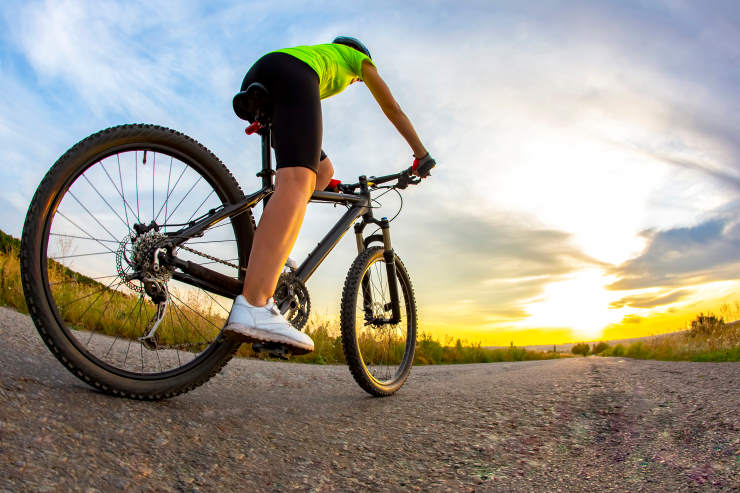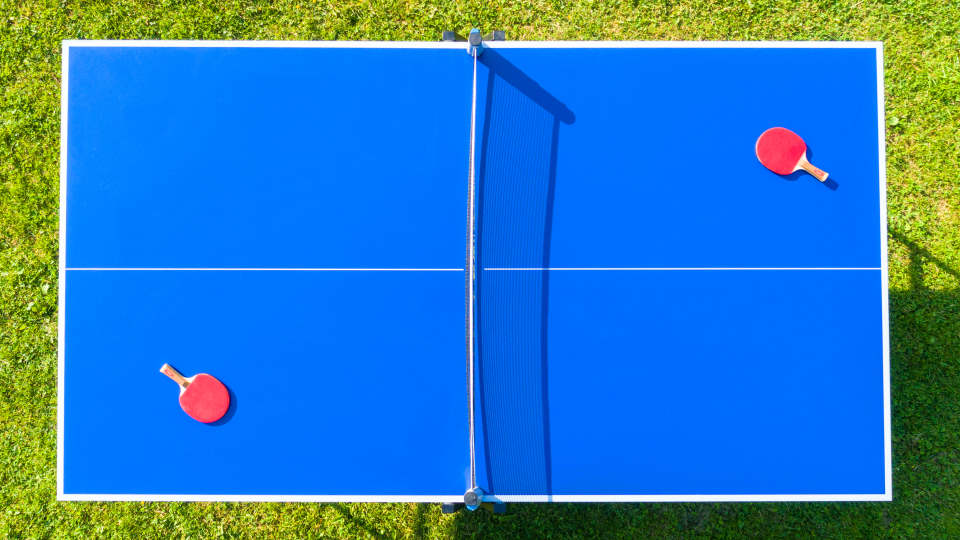Introduction
Cycling is a lifesaver in this day and age when cities are becoming increasingly crowded, loud, and dirty with automobiles and other forms of transportation. Because bicycles do not produce air pollution and consistent physical exercise may lessen the risk of diabetes, obesity, and cancer, many states believe that a robust riding culture has the potential to move residents toward better health.
Make sure you are familiar with the regulations for safer city riding, regardless of whether you are new to cycling or an experienced rider. If you are a cyclist who despises being screamed at or honked at by other road users, then there are some etiquette rules that you should consider adhering to at all times, regardless of the circumstances.
When you’re out on your bike, it’s important to follow several safety precautions, including wearing a helmet, maintaining your composure, and carrying a road ID card so that help can find you in the case of an accident. Behaviors such as venturing too far without being aware of your capabilities, venturing out without checking the weather forecast, and failing to maintain your bicycle are things you should avoid. We will examine the dos and don’ts of cycling and various topics.
What Are the Unwritten Rules of Cycling?
Keeping track of an unwritten set of rules is difficult, so we’ll make it easier by listing them all here.
Introduce yourself: Cyclists may be somewhat cliquey, so if you come across a close-knit group that doesn’t seem friendly, introduce yourself to prevent any caustic stares. Even if you see a few known individuals, it’s polite to introduce yourself. However, do not propose another route, a change in speed, or an unplanned café break; you must earn your spot before calling those types of shots.
Maintain your line: Nothing is more irritating than a novice rider weaving in and out front of you, one hand on the bars, flailing as they attempt to peel a banana. Don’t be that man; it not only annoys the rest of your group but also puts them in danger if you run across one of them.
Never half-wheel: It’s one of the worst things you can do on a large group ride. Only when you’re on the rivet in a race and attempting to terrify your competitors is half-wheeling permitted.
Respect the patron of the group: You may converse with the patron, but you may never educate the patron. Unless you want to fight for leadership, keep your lips shut and pedal if the patron starts yelling instructions.
Everything is a signal: Whether it’s a pothole, a parked vehicle, or a drunk person, make sure you signal anything that has found its way onto the road. If you do not signal and instead swerve, the rider behind you will be astonished as they are sent careening into the roadway.
Start together, finish together: Sticking together during the journey is one of the most important unwritten rules. Not only is it better, but it also means you have more people to accomplish all the jobs you’d rather not do.
What Should I Do After Cycling?

Some cyclists have a well-planned post-cycling recuperation program. We’ve compiled a list of helpful hints to help you get back on track after each ride.
Eat something: One of the key reasons for riding a bike is to lose energy and then replenish it. This entails eating. Cycling enables you to eat as much as you want without feeling guilty since you earned every calorie. According to fitness experts, you should consume something with protein within half an hour after exercising.
Clean up the mess in the hallway: When you got home, you dumped your filthy gloves on the floor while looking for the house keys, and then you left your cycling shoes, helmet, phone, and other stuff on the hallway floor. The sooner you put them away, the less attention they will attract.
Get some rest: Why sit when you can sleep? Recovery is just as vital as exercise, and there is no better way to recuperate than sleep. It’s what professionals would do.
Take a shower: You’ve just been in for a few minutes, and the fresh perspiration that was dripping down your face as you passed the door has already hardened into an unpleasant crust. Showers are ideal after a ride. Also, you have the option of progressively increasing the temperature by one degree every thirty seconds until the hot water tank is empty, your back is a raging shade of red, and you are compelled to leave.
Have a coffee: You may have stopped for a coffee on your bike, but that doesn’t mean you can’t have another one. Every serious rider’s post-ride regimen includes a cup of coffee.
Stretch: Stretching is a serious business, and many people take great care to prevent aches and injuries from developing in their legs and back. It is recommended to stretch while your muscles are still warm.
Clean your bike: The longer you wait after a ride to clean your bike, the less likely you are to do it.
How Long Should a Beginner Cycle?

When it comes to dos and don’ts of cycling, questions about how long and how long you should cycle may also be raised. If you are just starting as a cyclist and are unsure how often you should ride your bike, it is best to avoid exerting too much effort too quickly. First, set a goal of going on one to two rides each week over the first couple of weeks, but keep in mind that the most important thing is to pay attention to what your body needs.
If you go for a ride and find that it causes your muscles to feel sore later, you should wait a few days before going for another ride so that your muscles may recover and rest. This may mean you only manage one ride every week, but that’s still a terrific place to start. If, on the other hand, you see that your legs still feel well after one or two rides, continuing with another shorter ride is fine.
Because cycling is a sport that allows you to experience fairly rapid increases in your fitness levels, you’ll find that as the weeks pass, you’ll be able to pedal more often than you did when you first started as a cyclist.
So, how long should someone who is just starting a cycle for? A novice should start with a bike ride that lasts between 20 and 30 minutes. Setting goals that are beyond what your body is capable of doing is likely to be discouraging. You can always extend the length of your ride by considering your physical needs if you feel like it. Because if we exert too much force on the body, there is a greater chance that we may sustain some kind of injury.
What Are Some Tips When Cycling?
Based on the topic of dos and don’ts of cycling, it would be helpful to review and explain some tips while cycling. Riding a bike should be enjoyable, and for you to have the most fun possible, we’ve compiled the finest beginner cycling advice to get you started. These aren’t rules; they’re simply recommendations and quick solutions to make riding safer and more pleasant.
Set Your Seat Height Correctly: Do you feel discomfort in front of your knee or feel like you’re pedaling too slowly? If your seat is too low, you may underextend during your pedal stroke. This is a frequent rookie error since most individuals feel more at ease and secure if their feet can reach the ground. However, having the incorrect saddle height may put you in danger of harm. You should go to your neighborhood bike store. The staff should be delighted to recommend the appropriate saddle height for you.

Get a Full Bike Fit: One of the most significant components of riding is how your bike fits you. If the fit is uncomfortable, you won’t spend much time in the saddle, no matter how eager you are to ride your new bike. Two factors are critical for getting the appropriate fit: seat height and reach. When looking for a bike, take it for a test ride to ensure that the frame size is appropriate for you.
Don’t Worry About the Gear: You don’t need expensive clothing, clipless cycling shoes, or a high-end bike to become a cyclist. You’ll need a few items to get started (a bike and a helmet, of course), but don’t worry about spending a lot of money on flashy new gear.
Maintain Your Bike: You don’t have to be a skilled mechanic to take care of the fundamentals. Routine maintenance, such as chain lubrication, will save you money at the bike shop and extend your bike’s life and its components.
What Is a Good Speed for Cycling?
When talking about the dos and don’ts of cycling, perhaps one of the most important components of the subject is what the most suitable speed is for you. While we cycle, we often use speed as the most apparent statistic to compare ourselves to other riders, even though this metric isn’t necessarily the greatest thing to measure. When you do that, it is essential to have a solid understanding of what a decent average is for someone with your level of expertise.
The vast majority of riders can maintain an average pace of roughly 15 miles per hour during an hour-long ride. 10 mph is a reasonable pace for the beginning, but you should be able to go up to 15 mph relatively soon.
If you start exercising sometimes, you could get your average mph up to 18 mph, but if you exercise consistently, you might be able to bring it up to 22 miles per hour. The average speed of a professional cyclist in a race like the Tour de France might be above 25 miles per hour.
In addition, there are a lot of things that might affect how fast you go while you’re riding. One of the most important aspects that determine how quickly you’ll be able to ride is the route that you choose. When riding your bike on a crowded route, you need to be careful of pedestrians, other cyclists, dogs, and unpredictable children.
When going around someone else, you should go at a pace that is safe at all times. It is recommended that you do not go more than 10 mph faster than they are going. That affords you both a considerable amount of time to formulate your responses. If you are driving on a road that has several other automobiles, you need to drive at a reasonable speed without putting your safety at risk.
Conclusion

Throughout this, the dos and don’ts of cycling are reviewed. Consuming nourishment consistently, as well as protein, will be quite vital for you while you are riding. After a long travel, nothing will make you feel better than a refreshing shower followed by a good night’s sleep. You should clean your bike after every ride and perform maintenance on it at regular intervals. Doing so will keep you safe and make your subsequent rides more pleasurable.
Rides that last between 20 and 30 minutes are suitable for beginners who are just getting started with cycling. You may improve the quality of your ride as well as your sense of safety by adjusting the height of the seat on your bicycle to the position that works best for your body. In addition, 10 miles per hour is a fairly secure pace for a cyclist who is just starting.
Naturally, as your expertise with riding a bike grows, you’ll be able to go faster when needed. But if you are traveling in a congested area or on a route that is often traveled by automobiles, you should drive at a pace that is more suitable for the conditions you are driving in.



